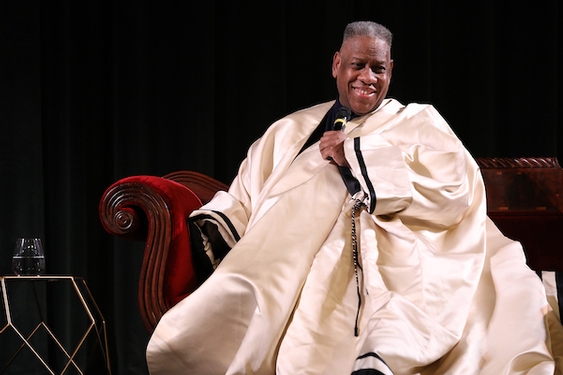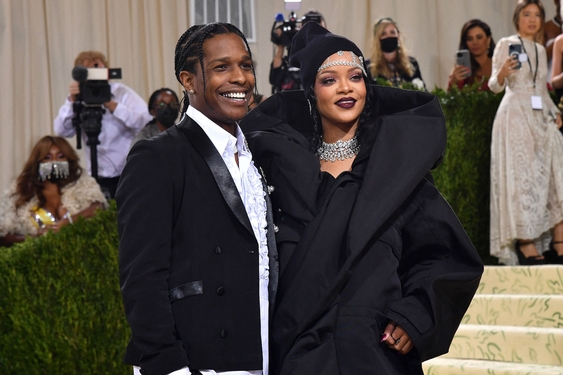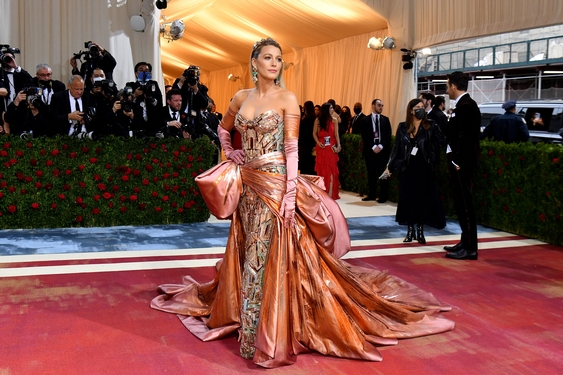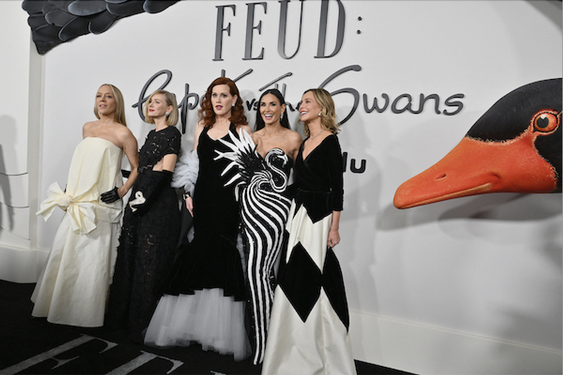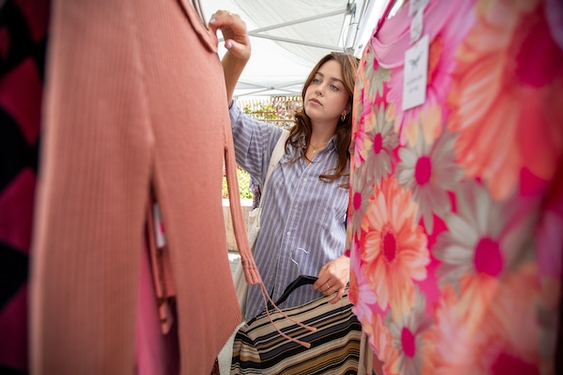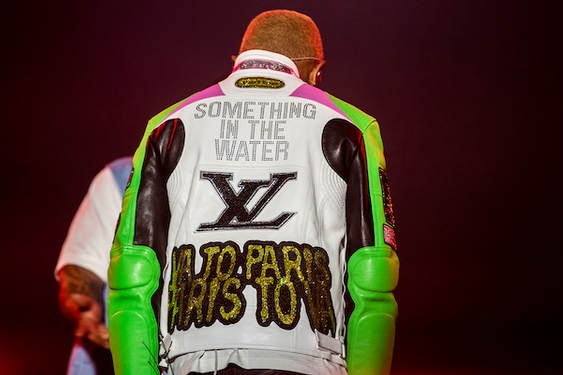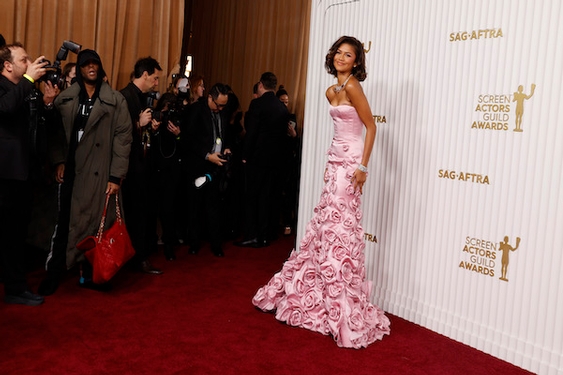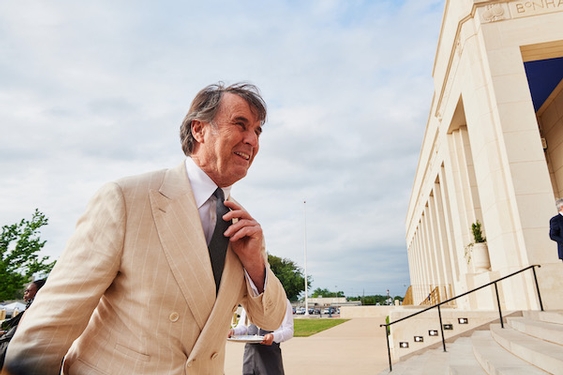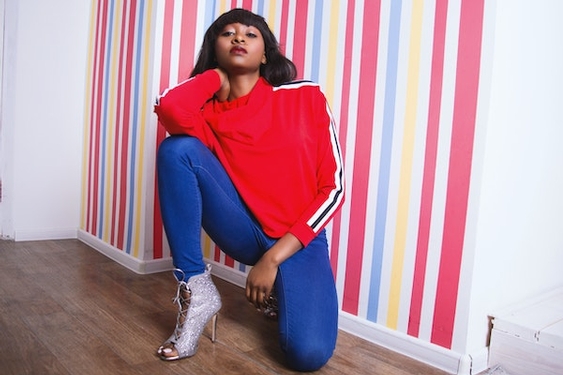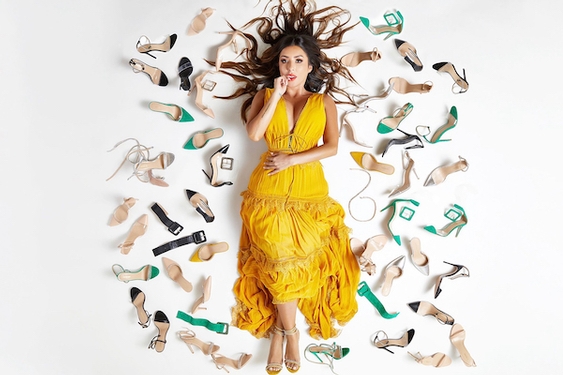André Leon Talley shared his fabulous encounters with Oscar de la Renta, Ralph Lauren, Karl Lagerfeld and Diane von Furstenburg in his monthly column, "Life with Andre," a staple of American Vogue in the 1990s.
He had the kind of access to designers, celebrities and models, fashionistas only dreamed of and he wrote about his experiences in such a way I felt like I was right there with him. I sat with him on upholstered couches in Victorian-era parlors. When he ran his fingers over an icy blue satin, my fingertips did too. The cool Mediterranean sea air kissed my cheeks on a designer's yacht at the same time his did. Talley's column was about beauty and his words were so descriptive, it was like scrolling through Instagram, decades before social media.
Talley succumbed from a heart attack in a New York hospital last week. He was 73.
Talley and I became friendly early in my fashion journalism career. As we exited New York Fashion Week shows — some of which I strolled into with him because nobody stopped André — we did more than chat about the season's polka dots and pleats.
He schooled me on why Michael Kors skirt suits were reminiscent of Dior's New look. He made sure I knew what elements of Carolina Herrera's evening wear collection were influenced by American couture designer Main Rousseau Bocher. One time, I admitted to not knowing who the grand dame of American sportswear Claire McCardell was, and, I swear, Talley rolled his eyes. "You must know who Claire is," he said before we parted. It was in these moments I learned that history was a crucial to fashion journalism.
"He was just extraordinary," said Ralph Rucci, Philadelphia couture designer and long-time friend of Talley. "He was an encyclopedia. He was the bibliography of fashion you never saw. We would go to dinner and talk for hours about couture... We lost a major, major visionary on our planet. I wish that someone would have known his kind nature more. He hid behind being a little rough."
He was towering, he stood at 6-foot-6, and his importance was telegraphed through his stack of matching Louis Vuitton luggage.
As American Vogue's creative director, and later its editor-at-large, Talley was the highest ranking Black man in the industry, paving the way for the likes of British Vogue's editor Edward Enninful, and influencing countless young stylists, like Philadelphia Fashion Week founder Kevin Parker. Talley dressed Jennifer Hudson for the 2008 Oscars and helped Michelle Obama choose her gown at her husband's 2009 Inaugural ball. He was a judge on Tyra Banks' America's Top Model and full of clever quips as a host on the Met Gala and Academy Awards red carpets.
But through his memoirs and documentaries, we learned that inside, he tried to fit into a world that treated him poorly. The fashion world is notoriously unkind. It's particularly unkind to Black people. And it's even more unkind to fat people. Talley wasn't immune from the nastiness. In the 2018 documentary, The Gospel According to Andre he told us that a well-known designer implied he slept his way to the top. They basically called "me a Black buck,' he said. A few scenes later, he cried when he recalled a fashion editor who referred to him as "Queen Kong."
Talley swallowed his pain as many older Black people do when white people in powerful positions dehumanize them. His billowing caftans evoked strength and appeared dignified. Weakness was not an option.
Talley was born in Washington, D.C. in 1948, but he was raised by his grandmother, Bennie Francis Davis, in Durham, North Carolina. Davis, who worked as a maid at Duke University, favored tinted blue hair and wore sharp navy suits to church. She taught Talley the importance of dressing well.
He earned a bachelor's degree in French studies from historically Black college North Carolina Central University and later earned a master's at Brown. Talley moved to New York in the 1970s to pursue fashion. He became close to then-Vogue editor, Diana Vreeland, who Talley said inspired his sense of fashion as much as his grandmother. He landed a job at Interview magazine and worked as a Paris correspondent for Women's Wear Daily before Anna Wintour hired him at American Vogue in 1993.
Wintour and Talley were friends and colleagues at Vogue for years. It was even reported that Wintour sent Talley to a diet center three times. In 2018, Wintour replaced Talley as host of the Met Ball with YouTube personality Liza Koshy, and their relationship cooled. Talley said Wintour distanced herself from him because he was "too old, too overweight and too uncool."
Talley talks about his relationship with Wintour in his 2020 book, "The Chiffon Trenches: A Memoir."
Talley championed exclusivity, but was also keenly aware of his role as a Black man in the fashion industry. He supported Black designers. He advocated for Black models. He gushed with excitement about the Obamas. Yet, he never really talked about race beyond the runway because elegance and fabulousness eclipsed issues of race.
After Talley left Vogue in 2013, he became much more outspoken. He supported Black Lives Matter. He spoke about racism in the fashion industry. He talked about how the industry hurt him. And he called on his ancestors for strength.
In May, he appeared on "The Tamron Hall Show" to address rumors about where he lived and his relationship with Wintour. He said he and Wintour were civil and he wanted to repair their friendship.,
Fashion journalists described Talley as "larger than life" and remembered him for his confidence and elegance.
Talley not only floated into a room, they wrote, he commanded it. Talley was a unicorn, in a world that wasn't kind to anybody, let alone a big, flamboyant Black man.
I remember Talley as a sensitive human being who cared about people. He even cared about me. I knew because of his get-it-together-sister eye roll.
___
(c)2022 The Philadelphia Inquirer
Visit The Philadelphia Inquirer at www.inquirer.com
Distributed by Tribune Content Agency, LLC.


